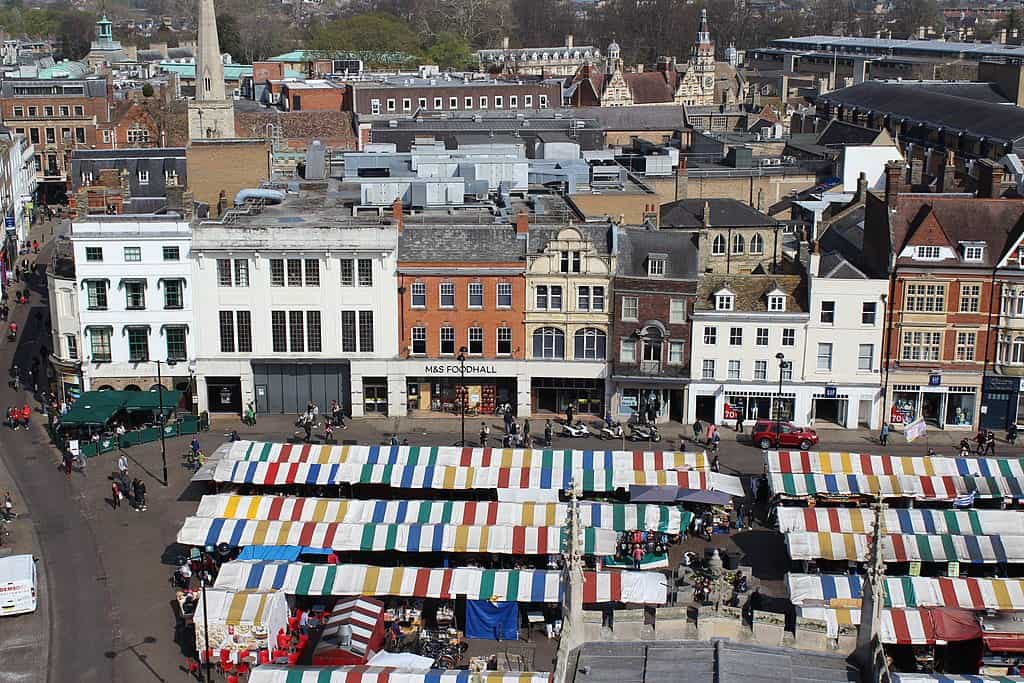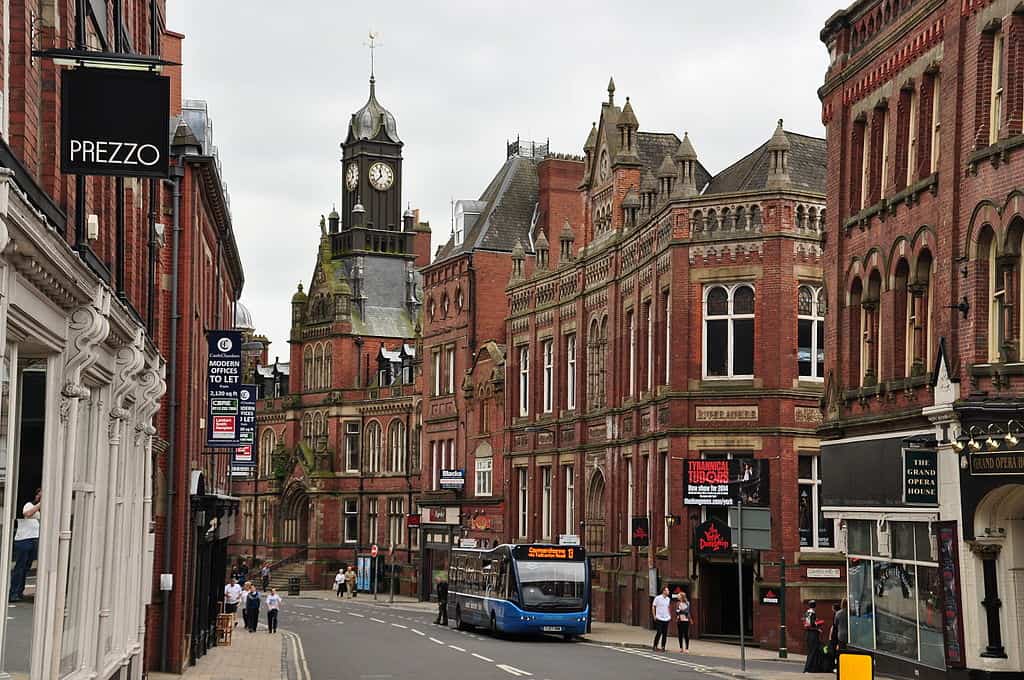As you consider your career after graduation, regions with a low unemployment rate can be good places to look for work. To attract the best people in a competitive market, companies may offer higher wages, more flexibility, or other benefits.
Job seekers in 2024 across the United Kingdom (UK) have good reasons to be hopeful. According to the Office for National Statistics’ most recent survey, the UK unemployment rate dropped to 4.2% in 2024, slightly lower than last year. Over the same time, according to the survey, the UK employment rate of 74.5% has shown improvement in the most recent quarter. This indicates that more people are finding work.
While this is promising news in general, some regions’ labour markets are especially welcoming to new grads with the right skills. Find out which communities made the list according to 2024 statistics collected by the Office for National Statistics’ data release on the labour market in the different regions of the UK. Read on!
Studying abroad in the United Kingdom? Head over to the ApplyBoard platform and find an institution and course that fits your needs.

Image Credit: Colin Park, CC BY-SA 2.0, via Wikimedia Commons
1. Belfast
Unemployment Rate: 1.9%
Northern Ireland’s cities, like Belfast, Londonderry, and Lisburn, can offer new graduates strong employment opportunities. Northern Ireland’s cities are continuing to grow, with thriving technology, finance, and higher education sectors.
Key industries in Belfast’s diverse economy include public administration, education, healthcare, and manufacturing. Its major employers include multinational financial services companies like PwC, Deloitte, and Citi, offering opportunities in banking, accounting, insurance, and financial management. Additionally, Belfast is an emerging technology and digital media hub, with jobs available in software development, IT services, and digital marketing.

Image Credit: Kestreltail, CC BY-SA 2.0 UK, via Wikimedia Commons
2. Cambridge
Unemployment Rate: 3.4%
The UK’s East England region, where cities like Cambridge, Norwich, and Peterborough are located, has experienced steady job growth across industries including technology, life sciences, and manufacturing. With a blend of historic charm and modern innovation, East England offers its residents a unique energy that combines academic prestige, cultural richness, and industrial progress.
In Cambridge, science and technology firms are growing quickly, particularly IT, life sciences, and technology manufacturing companies. Cambridge is at the core of the Cambridge Cluster or Silicon Fen: the UK’s equivalent of Silicon Valley. Silicon Fen is home to over 1,500 science- and technology-based companies, including Arm, the world’s leading semiconductor IP company. This company has global reach: Arm’s microchips are in 95% of mobile devices!

Image Credit: Jonathan Thacker, CC BY-SA 2.0, via Wikimedia Commons
3. Exeter
Unemployment Rate: 3.5%
The South West region of the UK has a diverse employment landscape. The area is best known for its education, healthcare, aerospace, technology, and creative industries. It also supports jobs in manufacturing, logistics, and public services, benefiting from its robust infrastructure.
Exeter is the capital city of the rural county of Devon, with a population of 134,500, and is a business hub for the South West region. During work hours, its population swells by over 25% with daily commuters to its technology, utilities, education, retail, and engineering industries.
While much of the city’s ancient Roman wall is still visible, a nod to its long history, Exeter’s academics keep an eye on the future with award-winning research. (It also keeps an eye on the weather, with more meteorologists than any other part of the UK!)
Build your budget and plan for expenses with our Cost of Living in the United Kingdom blog.

Image Credit: Diliff, CC BY-SA 4.0, via Wikimedia Commons
4. Oxford
Unemployment Rate: 3.5%
The South East region of the UK has a mix of bustling cities and beautiful landscapes. It’s known for its lively cultural scene, innovative business environment, and a strong sense of community. Key employers include education, technology, healthcare, and tourism industries. The region is also known for its strong academic institutions, innovative tech companies, and healthcare services.
The city of Oxford is renowned for its academic excellence. The University of Oxford consistently leads global university rankings, so new grads looking at postgraduate study or planning to work in academia would be in excellent company here. Over 43,000 post-secondary students attend the city’s two universities: the University of Oxford and Oxford Brookes. But did you know a significant number of its residents work in manufacturing, publishing, healthcare, and transportation services?
Fun Fact: The Mini Cooper, which first rose to fame thanks to the 1969 movie The Italian Job, and then was driven by famous movie spies like James Bond, Jason Bourne, and Austin Powers, is manufactured in Oxford by BMW.

Image Credit: Nilfanion, CC BY-SA 4.0, via Wikimedia Commons
5. York
Unemployment Rate: 3.5%
The Yorkshire and the Humber region of the UK blends historic charm with modernity. In fact, the Shambles, one of the best-preserved medieval streets in Europe, is in the city of York. This unique street actually inspired the setting for Diagon Alley in the Harry Potter book and movie series! York’s lively cultural scene, combined with strong local communities and rich heritage, makes it a great place to work and live: in 2018, it was recognized as one of the best cities to live in across the UK.
York also welcomes over eight million visitors yearly—which means lots of people are employed in tourism and the arts. As a hub on the nation’s rail network, with direct connections to every major city in England and Scotland, the railways are another major employer. York’s academic institutions also attract scholars and researchers from around the globe.

Image Credit: mattbuck, CC BY-SA 2.0, via Wikimedia Commons
6. Cardiff
Unemployment Rate: 3.8%
Some of Wales’ top industries include renewable energy, manufacturing, and technology. The Wales region includes cities such as Cardiff, Swansea and Newport.
Cardiff, the capital city of Wales, is known for a lively arts sector and its finance, media, and technology industries. Major employers in Cardiff include Amazon, Lloyds Banking Group, Enterprise Mobility, and HM Revenue and Customs. Cardiff is also considered a growing tech hub with numerous startups and established firms, particularly in fintech.
Fun Fact: Cardiff is home to the Principality Stadium, one of the largest stadiums in the UK, which hosts major sports events and concerts.
As you prepare to move into the workforce, keep these UK cities with low unemployment rates in mind. Each one offers its own set of benefits and could be a great place to start your career.
Ready to start your exciting adventure abroad? Don’t wait any longer; find your dream course on ApplyBoard now!






